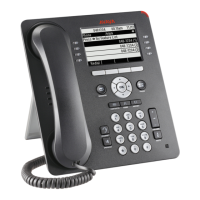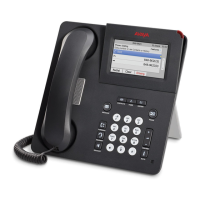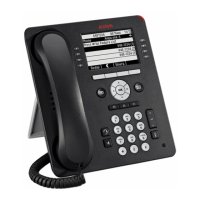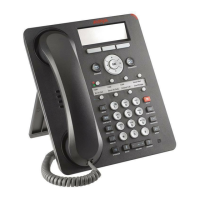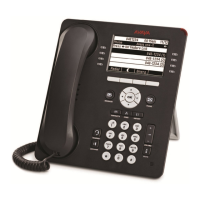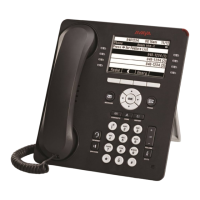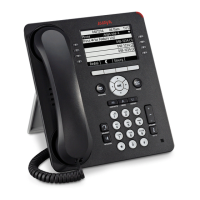Installation Error and Status Messages
Issue 1 August 2010 65
Call Error CAUSE: The user was on a call when the connection to the gatekeeper
went down, perhaps due to a network outage or a gatekeeper problem.
The telephone attempted to automatically register with the same, or
another, gatekeeper, but the responding gatekeeper had no record of
the call.
RESOLUTION: Wait for the call to end, and if the telephone does not
automatically register, restart the telephone.
Connecting... CAUSE: The telephone is attempting to establish a TCP connection with
the call server. A resource needed to establish the connection might not
be available or the 10 second buffer on switch-related actions might
have expired.
RESOLUTION: Allow the telephone to continue TCP connect attempts.
Contacting call
server...
CAUSE: The telephone has rebooted successfully and is moving on to
attempt to register with the call server.
RESOLUTION: Allow the telephone to continue.
DHCP: CONFLICT
* to program
CAUSE: At least one of the IP Address offered by the DHCP server
conflicts with another address.
RESOLUTION: Review DHCP server administration to identify duplicate
IP Address(es).
DHCPv6 Failure:
(with message)
CAUSE: A Reply message was received with a Status Code option that
contains a status-code of 1 (UnspecFail) or a Reply message was
received in response to a Renew or Rebind message with a Status
Code option containing a status-code value other than 0 (Success) or 5
(UseMulticast).
RESOLUTION: In the first case, DHCPv6 will be restarted. If this
message is the result of a status-code value other than 1 or 5, IPADDV6
will be set to null; if dual-stack operation is enabled the phone will also
cease use of its IPv4 address and IPADD will be set to null, and DHCP
operation will proceed.
Discover
aaa.bbb.ccc.ddd
CAUSE: The telephone is attempting to find a DHCP server, and the
user is allowed to view IP Addresses.
RESOLUTION: If this message appears for more than a few seconds,
verify with the LAN Administrator that a DHCP server is appropriately
administered on the network. If there is not supposed to be a DHCP
server, you must “break into” the Discovering process and use static
addressing. See Static Addressing Installation
on page 37. To break into
the Discovering process, press the # button, and when you see the
“100Mbs” or “10Mbs” message, quickly press the * (asterisk) button.
Table 3: Possible Error and Status Messages During Installation of 9600 Series IP
Deskphones (continued)
Message Cause/Resolution
2 of 5
